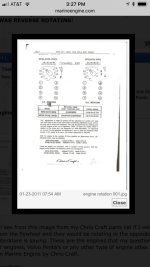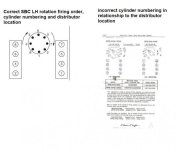Temple2426
Member
New guy here.
I rebuilt a CC 350QL engine and can not figure the firing order. I need help I have looked on the web and tried every imaginable combination. It is a reverse rotation engine. The firing order on the tag doesn’t work. Can someone who knows what they are talking about help. I have seen reading other post that there seems to be a wide range of those who know and those who think they know. I am not a marine engine guy but thanks to this forum and the advice of some who have posted similar questions I have been able to avoid problems up till now. I used this to wire it up but didn’t get a hit. And yes I have checked to see if I have spark. Please help!
I rebuilt a CC 350QL engine and can not figure the firing order. I need help I have looked on the web and tried every imaginable combination. It is a reverse rotation engine. The firing order on the tag doesn’t work. Can someone who knows what they are talking about help. I have seen reading other post that there seems to be a wide range of those who know and those who think they know. I am not a marine engine guy but thanks to this forum and the advice of some who have posted similar questions I have been able to avoid problems up till now. I used this to wire it up but didn’t get a hit. And yes I have checked to see if I have spark. Please help!



